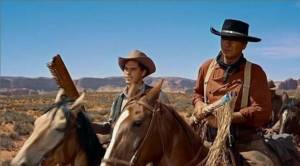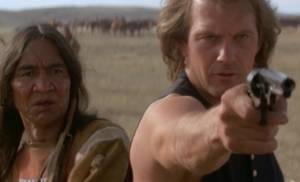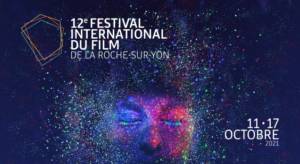[#InEnglish] The western, mirror of America
Pistol blasts, desperados, shootouts in front of saloons: welcome to Westworld, or more exactly the western world! In the early 20th century, this film genre has never ceased to make generations of cinephiles dream.
But what is the western? Defined as a cinematographic genre, it encompasses all the films taking place in the American West in the wake of the birth of the American nation. It thus illustrates some famous episodes of the Wilderness and the Frontier and brings together many cinematic fictional types such as action, horror, romantic and comedy films, making its boundaries rather blurred to define.
The Great Train Robbery (1903), by Edwin S. Porter is often referred to as the first western. The Pionniers (1903), The Birth of a Nation (1915) and the great The Last of the Mohicans (1920) will follow soon after.

These early westerns offer an idealized image of the Wild West and depict the nation imagined by the settlers: “Old westerns were like a checklist of what their revolution was against,” Robert Thompson, director of Syracuse University’s Bleier Center for Television & Popular Culture, says.
They then legitimize the appropriation of American land and the massacre of native Americans by the pioneers.
These films offer stories that are often described as « naive »: morality is expressed as a duality where good (often represented by the « white hat ») fights against evil (« black hat »). The Searchers, Rio Grande, The Man Who Shot Liberty Valance are representative of this period, making their director John Ford the founding father of the western.
The good is embodied by the main character, often portrayed as a courageous, strong and intelligent white settler, whose most convincing incarnation is that of legendary John Wayne.
The first westerns are made shortly after the end of the period they are set in, and contemporary viewers, who can be their fathers, can easily relate to the hero.
In the 1950s, the western genre became more complex and challenged traditional American values. The fabulous High Noon (1952) tells of a sheriff who must face the cowardice of an entire town and Silver Lode (1954) criticizes the frailty of democratic institutions. The western ceases to idealize the American nation and depicts heroes who have to face their own demons: they are alcoholics, sadists, cynics, murderers…
The spaghetti westerns, which appeared in 1964, are the best known expression of this, translating an emerging political and social lucidity in the United States. This lucidity is notably expressed through Sergio Leone’s films, which is in my opinion the best western’s director and regularly feature anti-heroes (Clint Eastwood in The Good, the Bad and the Ugly). The morality of these films is often blurred, as in There will be blood, and crudely translates the true colours of America: racism, poverty, daily violence…
The legitimacy of the Wild West is questioned: Indians and Blacks are no longer represented as villains, such as in Dances with Wolves, and the constitutive violence of the USA is questioned, as in the movie Once Upon a Time in the West (my all-time favourite western by the way).

Today, westerns are closer to fast-paced action films on acid (Django Unchained, No Country for Old Men…), the gut-ripping and brain-blowing scenes are a far cry from Sergio Leone’s almost contemplative films.
But despite these evolutions, the spirit of the western has survived the test of time and the myth of the cowboy with a Stetson hat continues to seduce generations.

“The western is flexible, that’s why it’s alive still,” Richard Aquila, professor of history, says. The themes evoked by the western never cease to evolve at the same pace as the public’s changing values, allowing the film genre to be always appreciated. They correspond to the founding myths of the American state and help unite the American people, just as the Iliad and the Odyssey helped build Europe.
Each generation finds their problems, their goals and their vision of the world. We can therefore understand the western as a mirror image that reflects the themes of the generation it addresses.
Alice Goument-Thibaut







